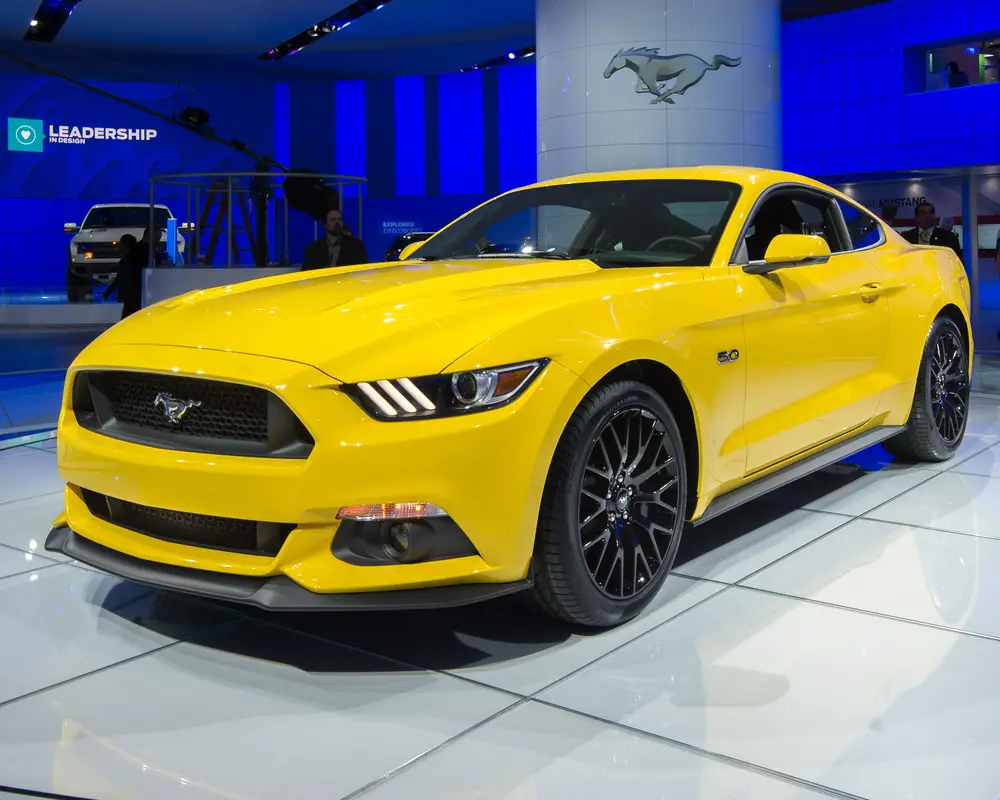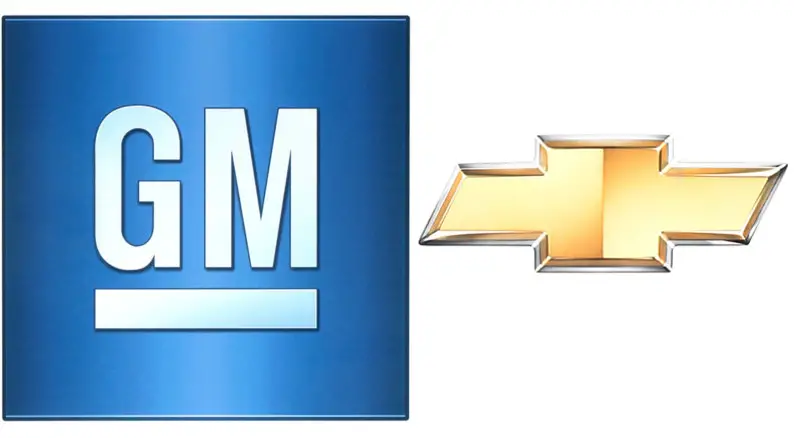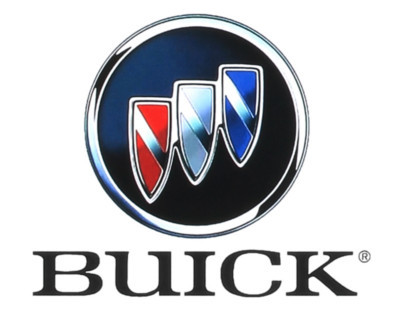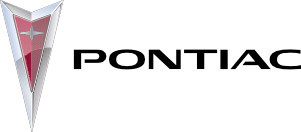Here’s a look at the history behind iconic car brands and how they got their names. This first part focuses on American car companies, and how many of them are interwoven with each other. Check out Part 2 and Part 3 for even more.
General Motors and Chevrolet
William Durant, the founder of General Motors (GM), initially made his fortune selling horse-drawn carriages in the late 1800s through a company he started with a $2,000 loan. Durant didn’t like cars and thought they were stinky, noisy, and dangerous, but he did see that the automobile industry could be consolidated. Durant envisioned a holding company that would be over other automobile manufacturers and their line of cars.
He started by acquiring the troubled Buick Motor Company in 1904. As will be mentioned later, he made Buick into the largest selling brand in the U.S. by 1908. He established General Motors in 1908, and in 1909, he bought Oldsmobile, Cadillac, and Oakland Motor Car, which would become Pontiac. Durant also bought a number of other companies that were put under GM, which consisted of paint companies, parts manufacturers, and wheel companies. But Durant had overextended the new company through the purchase of so many other companies. Durant was ousted by investors in 1911 when they didn’t like the direction the company was going.
Undeterred by his removal, Durant then co-founded another company with a Swiss-American race car driver named Louis Chevrolet. They started the Chevrolet Motor Car Company in 1911.
Incidentally, the iconic bowtie logo of Chevrolet, according to Ken Kaufmann, a Chevrolet historian, was believed to have come about when Durant saw a logo for a product in a newspaper. The product was made by the Southern Compressed Coal Company and called Coalettes. The logo for the product was found in a newspaper from 1911 and was the same logo as the Chevrolet company. Durant’s wife had even recounted that while he was reading a newspaper in 1912, he had told her that a particular logo in the paper would make a good logo for Chevrolet. The logo was first used on a Chevrolet in 1914.
Louis Chevrolet sold his shares in Chevrolet to Durant in 1914. Chevrolet was selling well enough that Durant was able to buy a controlling stake in the company he had originally founded, General Motors. He once again became president of GM in 1916.
He brought Chevrolet under GM in 1919 and also bought Frigidaire. But once again, his buying habits got the best of him, and he was again forced out of GM in 1920. Durant had nearly $1 billion in stocks by 1928, but then the Great Depression hit, and he was bankrupt by 1936. In the early 1940s, Durant began running a bowling alley in Flint, Michigan, and lived off a small pension with his wife until his death in 1947. Sources: (1)(2)(3)(4)(5)(6)
Buick
David Dunbar Buick built his first automobiles in 1899 and started Buick Motor Company in Detroit, Michigan, in 1903. He sold his newly incorporated company in 1904 to Benjamin Briscoe, who turned around and sold it to James Whiting in the same year. Whiting didn’t last long and ran out of money before 1904 was over and had to bring in William Durant as an investor.
Durant, at the time, owned his own carriage company. Durant made Buick into the largest selling brand in the United States until he started General Motors in 1908. David Buick remained a manager at the company through all these changes until 1906, when he sold all his stock in the company. Buick is currently the oldest active car maker in the country. Source: (7)
Ford, Cadillac, Lincoln, and Oldsmobile
Henry Ford built his first automobile, called a Quadricycle, in 1896. He started his first company, the Detroit Automobile Company, in 1899, but it was unsuccessful and dissolved in 1901. Ford, along with investors from the Detroit Automobile Company, started the Henry Ford Company, also in 1901. Ford quickly had a dispute with his backers and left the company and took his name with it in early 1902.
Henry Leland was brought into the company as a consultant and to conduct a liquidation audit later that year and recommended that instead of liquidating the company, it should be continued as a car company. The company was reorganized and renamed Cadillac after the founder of Detroit, Antoine de la Mothe Cadillac.
Leland and the other partners sold Cadillac in 1909 to General Motors. Leland stayed with GM until 1917 but left after a dispute with GM’s founder, William Durant. Leland then went on to start Lincoln the same year with his son and named the company after Abraham Lincoln.
In the meantime, Henry Ford had started the Ford Motor Company in 1903 with a portion belonging to the Dodge brothers. Ford then changed everything in 1908 with the introduction of his Model T.
Ford was able to make the car affordable for many Americans and was credited with the invention of the assembly line, but the invention of the assembly line had been patented and used earlier by Ransom E. Olds, the founder of Olds Motor Vehicle Company in 1897. His cars became known as Oldsmobiles.
Olds patented the assembly line in 1901 and used it for the production of his Oldsmobile Curved Dash car, which was the first mass-produced automobile. Henry Ford took the Olds assembly line and improved it by adding a moving conveyor. Ford then became the first to make cars on a moving assembly line.
Ford then crossed paths with someone from his past. In the early 1920s, Lincoln was having a difficult time and had to declare bankruptcy. Ford bought the company in 1922 for $8 million. Ford took over the company from Henry Leland, the same man that had turned one of his previous companies into Cadillac. Sources: (8)(9)(10)(11)(12)(13)(14)
Dodge
Before Horace and John Dodge founded the Dodge Brothers Company in 1900, the company supplied parts for the automobile industry in Detroit, Michigan. The brothers had previously run a successful bicycle business before entering the automobile industry.
They quickly became the largest supplier of parts in Detroit and made engines for the Olds Motor Vehicle Company. They also produce car parts that were assembled by Ford. The brothers held a 10% stake in Ford at the time and became the company’s single supplier. It was an uncomfortable arrangement for both companies, and the Dodge brothers wanted to break out from making cars only for Ford.
In 1915, Henry Ford stopped paying the stock dividend. The Dodges filed suit because of the decision, which resulted in a buyout of the brothers’ stake in Ford for $25 million. This freed them up to start producing their own line of cars. The Dodge brothers had already produced a well-regarded car in 1914, and they soon had a full production line. The brothers weren’t generally accepted in Detroit society and were known for drinking hard, racing boats, and their tempers.
The brothers both died in the same year. John Dodge died in January 1920 because of influenza and pneumonia, and his brother Horace died later that year in December also because of pneumonia, cirrhosis of the liver, and reportedly because he was so grieved over the loss of his brother. The company then went into the hands of their widows while it was being run by a longtime employee named Frederick J. Haynes. In 1925, the company was sold for $146 million and was then purchased by Walter Chrysler’s new Chrysler Corporation in 1928. Sources: (15)(16)(17)
Chrysler
Walter Chrysler didn’t start his career making cars. He wanted to follow in his older brother’s and father’s footsteps in the railroad business. His brother was already an apprentice in the machinist program for Union Pacific railroad in the late 1800s, and Walter wanted to do the same. But his father, Hank, who was a railroad engineer, wanted him to go to college.
Hank refused to sign off to let his 17-year-old son go into the program, so Walter got a job cleaning floors in the railroad machine shop instead. He soon got noticed for his work habits and was offered an apprenticeship by the shop’s master mechanic. This began Walter Chrysler’s 20-year career in the railroad business.
In 1908, Chrysler purchased his first car, the Locomobile. But instead of driving it, he studied it for three months by taking it apart and putting it back together. In that time, he learned everything he could about the car and how to drive it.
In 1911, Chrysler ended his railroad career. He was the works manager at the American Locomotive Company making $12,000 per year when he was offered a job at General Motors for half of his previous salary. He took the job at the age of 36 and entered the automobile business. He was tasked with running GM’s Buick plant in Flint, Michigan, and revolutionized its operation.
By 1916, Chrysler was made the president of Buick. He left Buick in 1919, and in 1920, he went on to save and reorganize the Willys-Overland Company, the automaker who later made the Jeep in the 1940s. Chrysler then took over another company in distress called the Maxwell Motor Company and acquired a controlling interest in it. In 1924, the first Chrysler car was built. It was a huge success, and the company was then renamed the Chrysler Corporation in 1925. Sources: (18)(19)
Pontiac
Pontiac was originally started in 1893 by Edward Murphy as the Pontiac Buggy Company. Murphy went into the automobile business in 1907 and formed the Oakland Motor Car Company, which was purchased by General Motors in 1909. General Motors next introduced Pontiac as one of its divisions in 1926 as a companion to its Oakland line of cars, and in 1931, Oakland was renamed to Pontiac.
The Pontiac name came from the Ottawa Indian Chief Pontiac, who led American Indians against British occupancy in the Great Lakes region in the mid-1700s. The city of Pontiac, Michigan, where Pontiac automobiles were produced, was also named for the chief. GM discontinued Pontiac in 2010. Source: (40)
Hummer
In 1983, the AM General Corporation was awarded a $1 billion contract from the U.S. military for 55,000 High Mobility Multipurpose Wheeled Vehicles to be delivered over five years. The new vehicle was known by the acronym “HMMWV” and later nicknamed the Humvee. The Humvee was later made into a civilian version in 1992 that was dubbed the Hummer. Source: (30)
Check out Part 2 and Part 3 of the What’s the Origin Behind These Car Names.









